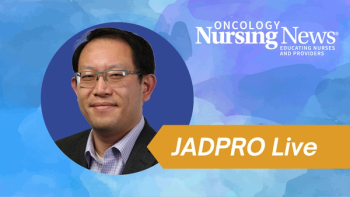
Patients With High-Grade Gliomas Not Getting Adequate Access to Palliative Care
Palliative care can help alleviate physical symptoms or side effects, ease difficult emotions and anxiety, resolve worrisome questions and even prolong life.
There’s a delicate balance to providing palliative care to people with high-grade gliomas.
Quality-of-life care has benefits from the outset for these patients, but because some might confuse it with end-of-life support, neuro-oncologists may be hesitant about introducing it.
An Australian health care team recognized that dilemma and responded by creating a standardized policy for introducing palliative care to patients with high-grade glioma. The guideline is meant to ensure that patients get palliation of their physical and emotional symptoms without becoming convinced that their health is failing, said Professor Jennifer Philip, chair of palliative medicine at St. Vincent’s Hospital at the University of Melbourne. She hopes the guideline will be widely adopted after it undergoes further study.
Philip discussed the guideline during a panel titled “Palliative Care Health Outcome Measures and Communication Strategies in Neuro-Oncology,” held Nov. 17 during the 22nd Annual Meeting and Education Day of the Society for Neuro-Oncology, in San Francisco.
“If it’s embedded (in the system), it does not make the patient feel singled out,” she said of palliative care, adding that the guideline negates the need for doctors to second-guess their timing when it comes to introducing this type of treatment.
Palliative care can help alleviate physical symptoms or side effects, ease difficult emotions and anxiety, resolve worrisome questions and even prolong life. It’s crucial for people with high-grade glioma, Philip said, because they are more likely to experience sudden, unexpected health setbacks or cognitive declines than those who have other types of cancers.
“Communication is very important,” Philip said. “It happens at diagnosis and often not after that, but people want to know what to do about seizures before they happen, and there are huge physical needs. (Caregivers) have needs, too, because they tell us that bizarre things happen. There are behavioral changes; the patient lacks insight, (caregivers) don’t know why it’s happening, and health care may not recognize it.”
That’s why barriers to palliative care need to be removed, particularly while patients are well enough to engage in decisions about their care, Philip said. Her model aims to do that by standardizing referrals for this kind of care, so that both patients and doctors expect it to be part of treatment and know when it is supposed to be offered.
The model, called I-COPE, suggests that palliative care interventions should span a patient’s whole experience with high-grade glioma. It calls for regular communication about palliative care, including routine monitoring and screening of patient and family needs, as well as proactive responses to anticipated concerns.
The guideline suggests the initiation of specific initiatives according to disease stage or transition points, as well as coordination of all these efforts.
A phase 2 pilot study of the program included 32 patients, most with late-stage disease who had undergone surgery, and 31 caregivers. Participants reported a high level of completion of the program and satisfaction with it, and health care practitioners found it useful, Philip reported.
The program was developed based on feedback from patients, caregivers and health care professionals. It also incorporates the team’s review of scientific literature and analysis of epidemiological data about more than 1,000 patients treated in Victoria, Australia for high-grade gliomas over several years. Using those data, a multidisciplinary advisory committee framed the recommendations.
“Our goal is to build it as a routine part of cancer care for this group,” Philip said.
The panel discussion was chaired by Tobias Walbert, MD, PhD, MPH, director of neuro-oncology at the Hermelin Brain Tumor Center at Henry Ford Health System, in Detroit, who agreed that palliative care, in parallel to medical treatment, should be started soon after diagnosis — especially in advanced cancers — to best ease patients’ pain, other physical discomforts and psychosocial and spiritual concerns.
He clarified that palliative and hospice care have different aims, but added that they should be part of a continuum overseen by the same providers throughout, so that patients never feel abandoned.
Some challenges to that goal are that most neuro-oncology units are not set up to keep tabs on declines in patients’ conditions that could be eased with the help of palliative care, Walbert said. He added that, when a patient is ready to transition to hospice, oncologists and palliative care specialists often find it difficult to have the necessary end-of-life discussions. Unfortunately, he said, this can mean that patients don’t benefit from hospice services as early as they should.
Alan Carver, a neurologist specializing in palliative care and pain management at Memorial Sloan Kettering Cancer Center, in New York, suggested that all neuro-oncologists should be taught basic palliative care skills so that they can help manage symptoms and offer patients well-rounded guidance about their care. He agreed that doctors often have trouble discussing mortality, but said they should be able to.
“Patients want to know the trajectory of their disease so they can plan,” he said. “They want to know the pros and cons of their options.”
Carver suggested that doctors acknowledge patients’ uncertainty and offer realistic information, while also providing hope and emotional and spiritual support. Doctors who avoid such discussions, Carver said, “don’t get the joy of helping our patients to live as well as they can for as long as they can.”

















































































